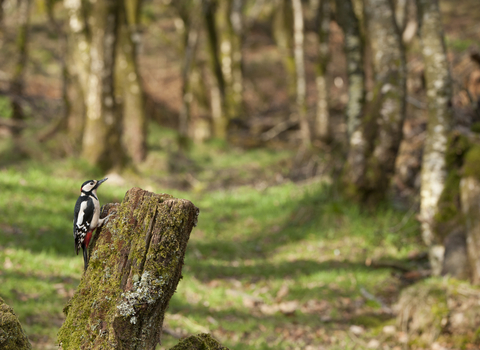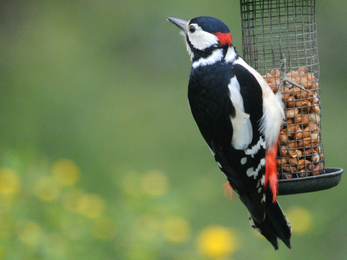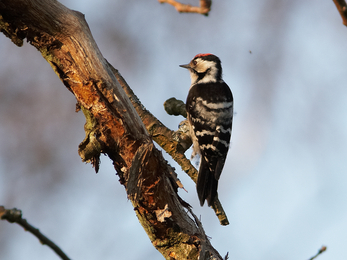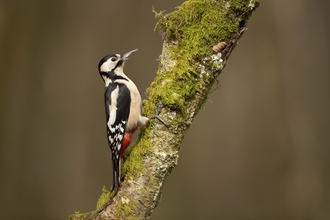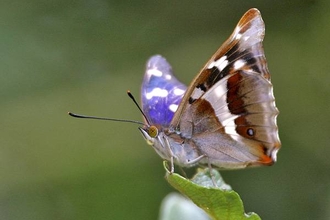Woodpeckers
While our resident songbirds; the robin, great tit, chaffinch, wren, and blackbird bring the melody, our woodpeckers bring the rhythm. The great spotted woodpecker and their smaller, rarer cousins, the lesser spotted woodpecker can be heard ‘drumming’; hammering their beak against a tree to show off to potential mates and rivals. It was thought that the bones of the woodpecker’s skull have evolved spongy ‘shock absorbers’ to protect their brain while they drum with impressive force in bursts of up to 20 times per second - but a recent study has shed doubt on this long-standing theory.
Both males and females ‘drum’, using it as a form of communication between each other, as well as to defend a territory and to advertise for a mate
Find woodpeckers near you
Essex, Shut Heath Wood nature reserve, is a very reliable site to see and hear the elusive lesser spotted woodpecker in early spring, before there are leaves on the trees. Other good spots to try include:
- Ayrshire, Ayr Gorge Woodlands
- Cambs, Waresley and Gransden Woods
- Gloucestershire, Lower Woods
- Leicestershire, Launde Woods
- London, Sydenham Hill Wood
- Oxfordshire, Warburg Nature Reserve
- Pembrokeshrie, Pengelli Forest
- Warwickshire, Brandon Marsh
- Warwickshire, Oakley Wood
- Yorkshire, Owl Wood and Pit Plantation
- Yorkshire, Birch Wood
- Yorkshire, Moorlands
How to do it
Head out into the woodlands near you on a still, clear day. Ancient, broad-leaved woodlands are the best, with enough big old trees to give places for woodpeckers to nest. Great spotted woodpecker drums in short bursts that fade out at the end. The drumming of the lesser spotted woodpecker is higher pitched, in a longer burst that stops abruptly.
If you can't get there
Great spotted woodpeckers are increasingly common as garden visitors: put out a peanut feeder to tempt one onto your bird table.
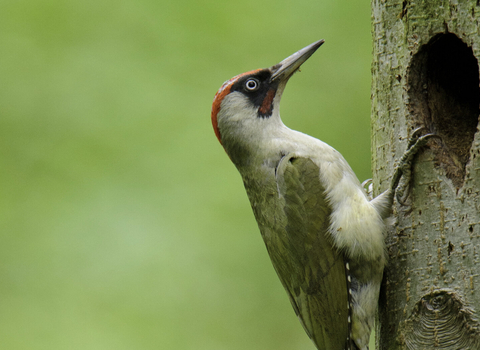
Green woodpecker by Andrew Mason
More wildlife experiences
From seeing colourful wildflowers to spotting magnificent birds of prey, we can help you get closer to wildlife across the UK.

